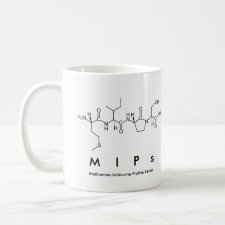
Authors: Wang YT, Yu YJ, Sokolov J, Levon K, Rafailovich M
Article Title: Surface-imprinted biosensors for the detection of proteins, cancer markers and viruses.
Publication date: 2018
Journal: Current Trends in Polymer Science
Volume: 18
Page numbers: 1-13.
Alternative URL: https://www.researchgate.net/profile/Yingjie-Yu-2/publication/328189907_Surface-imprinted_biosensors_for_the_detection_of_proteins_cancer_markers_and_viruses/links/5bbd8af292851c7fde3761fb/Surface-imprinted-biosensors-for-the-detection-of-proteins-cancer-markers-and-viruses.pdf
Abstract: Biosensors using artificial recognition elements have generated intensive interest from scientists and medical professionals in recent years. Their high stability and sensitivity make them easier and less costly to use, store, and manufacture than sensors based on biological recognition elements. Surface imprinted sensors using the organic self-assembled monolayers (SAMs) of functionalized oligomers on gold surfaces have the advantages of high contact areas, fast response, easy construction, as well as integration of the recognition element with the transducer, all of which can lead to high sensitivity. The possibility of using SAM molecules with different end groups offers the flexibility of changing the affinity of the sensor to the target biomolecules while modification of the gold surface roughness enables imprinting bio-macromolecules much larger than the length of the SAM molecules. Co-dissolution of the bio-macromolecules and the organic molecules in a blend of aqueous/organic solvents ensures the formation of SAMs and at the same time maintains the viability and configuration of the biomacromolecules. Hence the synergy established between the substrate topography, the surface chemistry, the imprinted SAM, and the molecular structure of the analyte is the essential element for the successful construction of the biosensor. This review article focuses on the recent achievements in the development of the surface-imprinted biosensors for proteins, cancer markers and viruses, from multiple groups working in this area.
Template and target information: Review
Author keywords: biosensor, surface molecular imprinting, self-assembled monolayer



Join the Society for Molecular Imprinting

New items RSS feed
Sign-up for e-mail updates:
Choose between receiving an occasional newsletter or more frequent e-mail alerts.
Click here to go to the sign-up page.
Is your name elemental or peptidic? Enter your name and find out by clicking either of the buttons below!
Other products you may like:
 MIPdatabase
MIPdatabase









